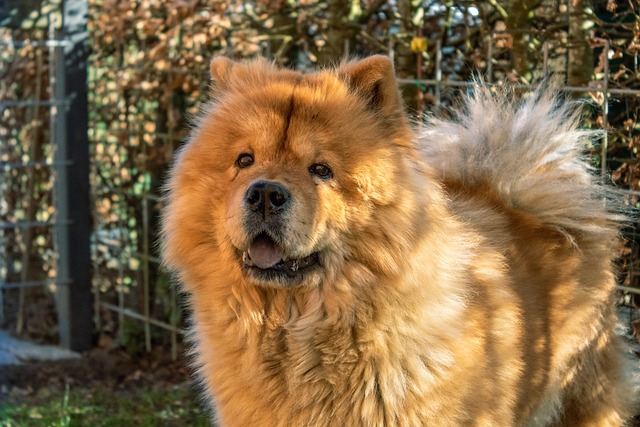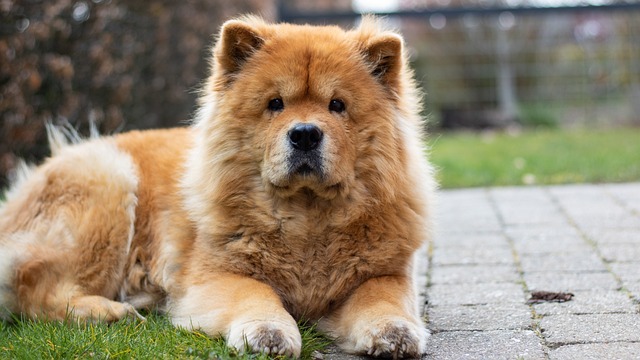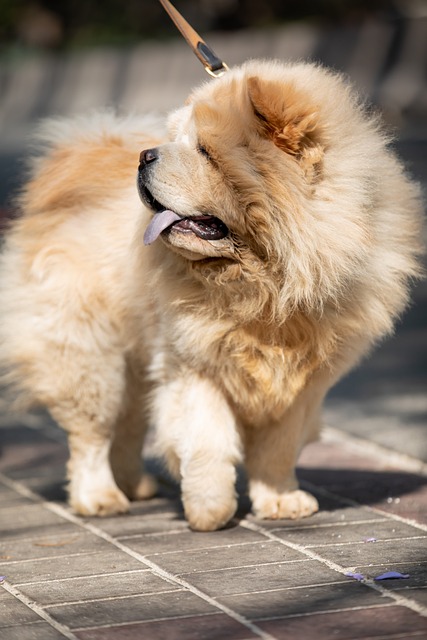Discover our comprehensive guide’s rich history, essential care tips, and effective training strategies for Chow Chow dogs. Unlock the secrets of this unique breed!

Discover the Enigmatic Chow Chow: Your Guide to This Majestic Breed
The Chow Chow, affectionately known as the “puffy lion dog,” stands as a breed celebrated for its captivating fluffiness and innate charm. With a lineage that traces back thousands of years to ancient China, these majestic canines have earned their reputation for striking appearances and unwavering loyalty. In the realm of canine companions, they are unmistakable, sporting a lion-like mane, a distinctive blue-black tongue, and an air of aloofness. This article embarks on a comprehensive journey into the world of Chow Chows, guiding you through their physical traits, temperament, and unique requirements. Alongside, we delve into grooming necessities and essential health considerations. Are you ready to dive into the captivating world of this regal and large breed? Let’s embark on this adventure!
Unlocking the Enigma of Chow Chow Traits
The Chow Chow, with its rich history and distinctive development, ranks as one of the most intriguing and unique breeds on the planet. In this section, we dissect the breed’s physical characteristics, personality traits, and general temperament, while also exploring the specific standards set by the AKC (American Kennel Club).
Unveiling Physical Marvels

Size and Build: According to current AKC standards, the Chow Chows fall into the medium-sized category. Males stand tall at 19-22 inches at the shoulder, while females are slightly smaller, measuring 18-20 inches. Regarding weight, males typically tip the scales at 55-70 pounds, whereas females range from 45-60 pounds. These dimensions render them substantial and elegantly proportioned.
Head and Skull: The Chow Chow’s head is notably sizeable, adorned with visible wrinkles and a short, distinctive muzzle.
Ears: They boast a pair of small, triangular ears, moderately thick, carried erect with pride.
Eyes: The eyes of a Chow Chow are set wide apart, nestled deep within the skull, taking on an elegant almond shape, with most sporting shades of dark brown.
Coat: A hallmark feature of the Chow Chow is its dense double coat. Comprising a straight outer layer and a soft, woolly undercoat, this coat can flaunt a range of hues, from regal red to classic black, tranquil blue, warm cinnamon, and creamy tones.
Tail: This breed is renowned for its plume-like tail, held gracefully across its back.
Gait: What sets them apart is their distinctive gait. While it may appear somewhat ‘stiff,’ their movements are deliberate and graceful, leaving an indelible impression.
Understanding Temperament and Personality

Chow Chows are celebrated for their unwavering loyalty, innate intelligence, and independent nature. They stand as fierce protectors of their families, making them exceptional companions. It’s important to note their reserve and aloofness around strangers; hence, early socialization is imperative.
However, in general, they maintain a calm and adaptable demeanor when raised in well-structured environments. With the right owner and appropriate training, Chow Chows can evolve into affectionate and devoted pets, adaptable to various households and living situations.
Nurturing Your Chow Chow
Having explored their physical attributes and temperament, it’s time to delve into the essential care aspects for your Chow Chow. This section outlines their dietary needs, exercise requirements, and crucial grooming tips specific to this breed.
Diet and Nutrition
Chow Chows, being a larger breed, demand a well-balanced diet. Opt for high-quality dog foods that offer a blend of protein, complex carbohydrates, and natural fats, crucial for muscle development and energy levels. These elements also play a pivotal role in maintaining a healthy coat and skin.
Consistency in feeding schedules and portion control is essential to prevent overeating and obesity, a potential concern for Chow Chows who tend to relish their meals. When in doubt, consult your dog’s veterinarian for tailored guidance.
Exercise and Activity
Despite their larger size, Chow Chows have moderate exercise needs. Experts recommend providing them with approximately 45 to 60 minutes of daily exercise, encompassing leisurely walks, light jogs, and engaging one-on-one playtime.
In addition to physical activity, mental stimulation is equally important. Introduce puzzle toys and games that keep their minds occupied. While they may not require strenuous exercise, keeping them active is paramount for their overall well-being, contributing to their health and happiness.
Grooming Essentials
In addition to proper nutrition and exercise, meticulous grooming is necessary for Chow Chows, given their ‘puffy’ appearance. Key grooming tips include:
Daily Brushing: Their thick double coat requires daily brushing to prevent matting and manage shedding. Occasional visits to a professional groomer for coat trimming are advisable for the best results.
Regular Bathing: Frequent bathing, approximately every 4-6 weeks, is recommended. Utilize mild dog shampoo when necessary.
Ear Cleaning: Regularly clean your pet’s ears with a veterinarian-approved cleaner to ensure their ear health and prevent issues caused by trapped debris or excessive earwax.
Nail Trimming: Trim your dog’s nails bi-weekly to prevent overgrowth. Seek professional assistance if needed.
Dental Hygiene: Regularly brush your dog’s teeth to prevent oral issues, ensuring their breath stays fresh and teeth remain healthy.
Navigating Health Concerns
While most Chow Chows enjoy relatively good health, they are susceptible to various conditions. Some common health issues include:
Hip Dysplasia: This genetic condition affects the hip joint’s development and may lead to mobility issues.
Elbow Dysplasia: Similar to hip dysplasia, this condition impacts the elbow joint, potentially causing pain and mobility problems.
Entropion: An inversion of the eyelids, potentially leading to eye irritation and vision problems.
Gastric Dilatation-Volvulus (Bloat): This painful condition arises from the twisting of the stomach, trapping its contents. It is common in large, deep-chested breeds and can be life-threatening.
Allergies: Chow Chows are susceptible to allergies, often manifesting as skin or digestive issues.
Heart Problems: Heart defects are relatively common in Chow Chow puppies.
Patellar Luxation: This condition involves a shallow knee groove, leading to the dislocation of the patella and lameness.
Training and Socialization

The final section sheds light on essential training requirements for your Chow Chow, offering effective techniques to nurture good behavior and adjust to your pet’s needs. Early socialization is a key aspect of your dog’s growth and development, ensuring a well-adjusted and sociable companion.
Unlock the Potential: Training Your Chow Chow
Training a Chow Chow requires patience and consistency. Initiate training during their puppy stage to establish positive habits. Employ positive reinforcement techniques, such as treats, praise, and toys. Being firm yet gentle is essential, as this breed responds well to a calm, assertive approach. Early socialization exposes your pet to diverse experiences, people, and environments, paving the way for a well-adjusted adult dog.
Embracing Early Socialization
Early socialization is paramount for your Chow Chow’s development. Begin with controlled introductions to other dogs and gradually expand to different breeds and sizes. Frequent visits to parks and dog-friendly spaces acclimate your dog to new surroundings. Encourage positive interactions with strangers, rewarding good behavior with treats and praise. Consistency and patience are key to raising a well-adjusted and friendly companion.
Chow Chow Myths Debunked
There are several misconceptions about Chow Chows that need to be addressed.
Aggression
Contrary to popular belief, Chow Chows are not inherently aggressive. With proper training and socialization, they can be loving and loyal companions.
Incompatibility with Children
Chow Chows can coexist harmoniously with children if introduced and raised together in a safe and supervised environment.
FAQs
What is the average lifespan of a Chow Chow?
Chow Chows typically enjoy an average lifespan of 8 to 12 years, with proper care and support potentially extending their years.
Are Chow Chows good with children and other pets?
While known for their loyalty and protectiveness, Chow Chows may exhibit reservations around strangers, including children. Early socialization and training can help mitigate this tendency.
What are common health issues in Chow Chows?
Common health issues include hip and elbow dysplasia, patellar luxation, heart problems, entropion, and allergies. Regular health screenings are crucial to ensure your pet’s well-being.
How often should I groom my Chow Chow’s double coat?
Daily brushing is essential to prevent matting and manage shedding. Occasional visits to a professional groomer for coat trimming are also advisable.
Is early socialization really necessary for Chow Chows?
Yes, early socialization is crucial to help your Chow Chow adapt to various experiences, people, and environments, ensuring they become well-adjusted and sociable companions.
Conclusion
The Chow Chow, a truly remarkable breed, captivates with its unique history and personality. Their dignified presence, independent spirit, and distinct traits offer a special companionship to those who appreciate their individuality. While training and socialization may pose challenges, your efforts will be rewarded with a loving, protective, and devoted furry friend. Whether drawn to their regal demeanor, captivating blue-black tongue, or unwavering loyalty, the Chow Chow offers a fulfilling and enduring bond that lasts a lifetime.
Sources
Wikipedia. “Chow Chow.” Wikipedia: The Free Encyclopedia.
Pet helpful. “The Comprehensive Guide to Chow Chow Dogs: History, Care, and Training“
Thank you for visiting Loving Pet Parents! We’re passionate about providing helpful information and resources to pet owners. If you’ve enjoyed reading our articles, we invite you to explore more of our content on our website. You’ll find a wealth of information on pet care, behavior, nutrition, and much more. Plus, we’re always adding new articles and resources to help you give your furry friend the best possible care. So why not bookmark our website and check back regularly for new content? We appreciate your support and look forward to sharing more valuable insights with you!
Doberman Pinscher Breed: Unveiling the Noble and Powerful Protector
How to Socialize a Dog Through Dog Sports: Unleash the Bonding Power
7 fun brain games for dogs’ mental stimulation
Preventing Sports Injuries in Active Dogs: Expert Tips and Insights
Mastering Fish Stress Relief: Expert Tips for a Healthy Aquarium
Discover the Enchanting Pomeranian: Unraveling the Magic of This Adorable Companion!
Budgie Care Guide: 13 Essential Tips for Happy Birds
25 Tips to Make Traveling with Pets Much Easier
200+ Great Name Ideas for Your Pet Fish with Their Meanings
Cockatoo vs Cockatiel: Unveiling the Key Differences for Bird Enthusiasts
Ultimate Monsoon Pet Care: 8 Essential Tips for a Happy and Healthy Furry Companion
Discover 200+ Cute Cat Names for Every Kind of Kitty: A Purrfect Guide to Naming Your Feline Friend
The Ultimate Guide to Arowana Care: Expert Tips and Advice
All About the Legendary Bengal Cat
Top 10 Low-Maintenance Tropical Fish That Are Easy to Care For
Complete Betta Fish Care Guide For Beginners: Everything You Need
Betta Fish Fin Rot: Symptoms, Causes, Prevention & Treatment
We hope you’ve found our articles informative and helpful in caring for your furry companion. If you think our content could benefit other pet owners, we would greatly appreciate it if you shared it with your friends and family. By sharing our articles, you’ll be helping to spread valuable information that can improve the lives of pets and their owners. You can share our articles on social media, through email, or by simply telling others about our website. We thank you for your support and for helping us reach even more pet lovers with our content.





